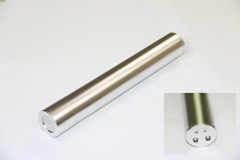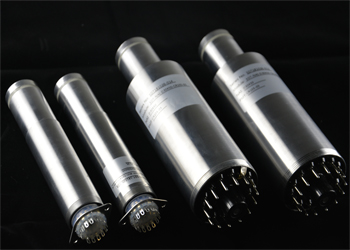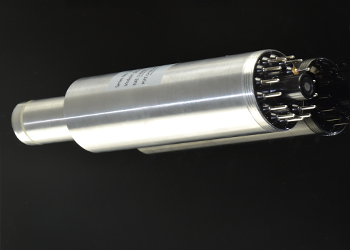Specification of probe NaI(Tl)-D25x25-CR125-Preamplifier
|
SD1100(1”x1” NaI(Tl) detectors)
|
Value
|
Unit
|
|
Detector
|
Scintillator
|
NaI(Tl) crystal
|
---
|
|
Dia.25x25
|
mm
|
|
Photomultiplier Tube
|
Hamamatsu CR125 |
--- |
|
HVPS
|
Internally Installed
|
---
|
|
Voltage Divider
|
Internally Installed
|
---
|
|
Preamplifier
|
Internally Installed
|
---
|
|
Performance
|
Detection Object
|
Gamma-Ray
|
---
|
|
Energy Resolution
|
≤9%@662KeV(Cs-137)
|
---
|
| Output Signal |
Negative Pulse Signal
|
---
|
|
1.0V@662KeV(Cs-137)
|
---
|
|
Operating Environment
|
Input Voltage
|
+12±0.5
|
V
|
| Operating Temperature |
0~+40 |
℃ |
|
Storage and
Transportation
Environment
|
Temperature
|
-22~+55
|
℃
|
|
Humidness
|
≤70%
|
---
|
Diemnsion and Connection(Unit: mm):
.jpg)
Matters need attention:
1) Each detector is thoroughly tested before shipping and comes with a 12 months guarantee, we are responsible for the repair, replacement within the warranty period, and provide technical support. Please don't disassemble the detector by yourself, in case of any questions please contact us.
2) The packaged product allows to transport by cars, trains, airplanes, ships and other transportation vehicles, transportation should prevent severe shock, severe vibration, rain and so on.
3) Scintillation detector should be stored in a cool, dry environment.
4) Please pay attention to the input voltage value and polarity, improper input voltage will lead to the detector does not work and even damage.
5) The cable should be correctly connected to the connector, incorrect connection may lead to detector damage.




 Video
Video.jpg)




